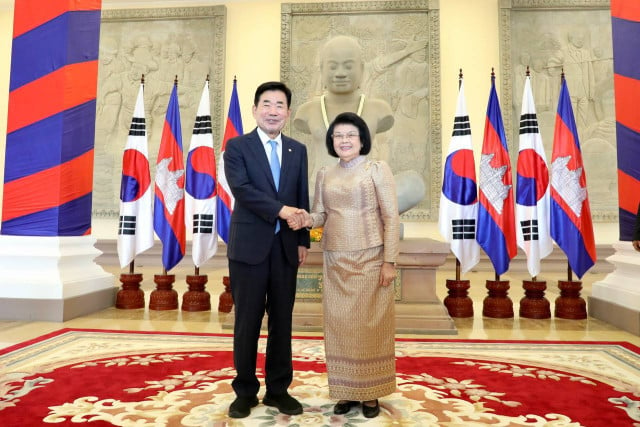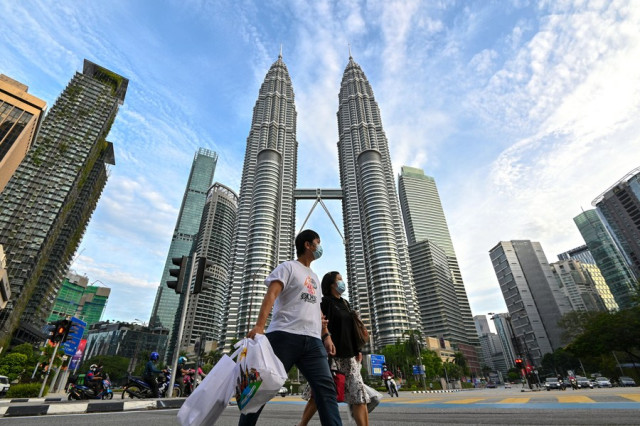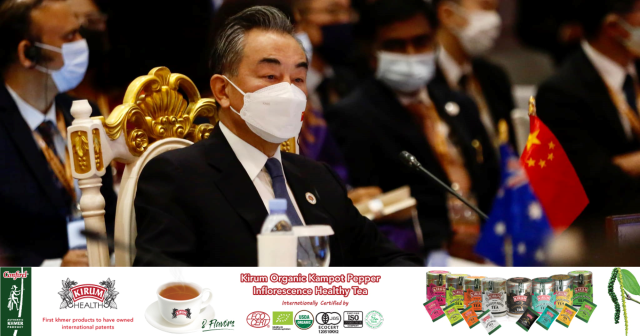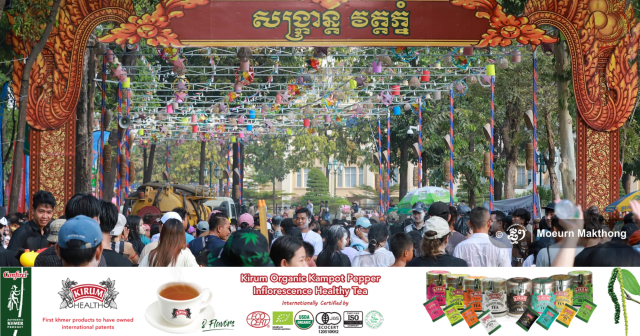Botanical Garden Opens in Siem Reap
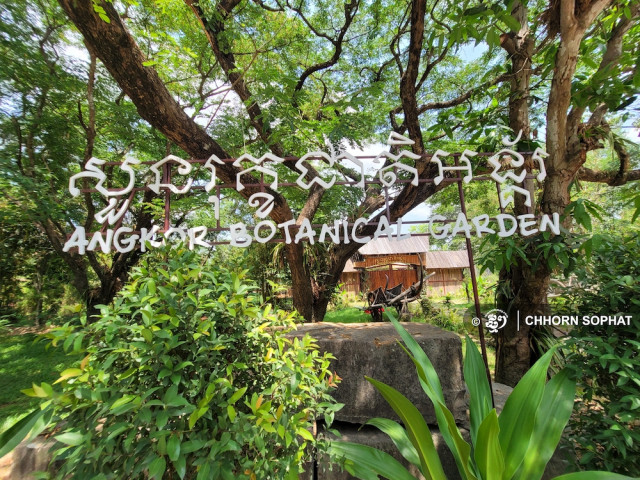
- By Teng Yalirozy
- and Hong Sreyna
- May 19, 2022 3:33 PM
Crucial step to conserve natural resources
PHNOM PENH – Cambodia’s first botanical garden, launched in Siem Reap province, is seen as a crucial step to conserving natural resources and preventing forest land encroachment.
And expert encourages people to support and learn more about its importance.
Cambodia officially inaugurates the Angkor Botanical Garden in Siem Reap on May 19. Visitors can visit the garden for a month free of charge. The garden has more than 500 species of plants and animals.
Garden grew from spice plants display
The botanical garden is on Sihanouk Boulevard near Borey Prem Prey. Stretching over 15 hectares, it was originally called a spice garden and was created on two hectares, said Yit Chandaroat, deputy director-general of the APSARA National Authority.
In 2010, the APSARA Authority planned to expand the park by establishing an irrigation system originating from the Siem Reap river to water the plants. In 2018, the authorities added many species of animal such as turtles, peacocks, pigeons and rabbits.
The authority decided to expand the park to meet the needs of tourists who do not want just to visit temples. Tourists are interested in new sources of entertainment and sightseeing and the new garden is attracting more and more tourists to the province.
“Angkor Botanical Garden will also contribute to the development of tourism as well as the conservation of the Angkor archaeological site in a sustainable manner,” Chandaroat said.
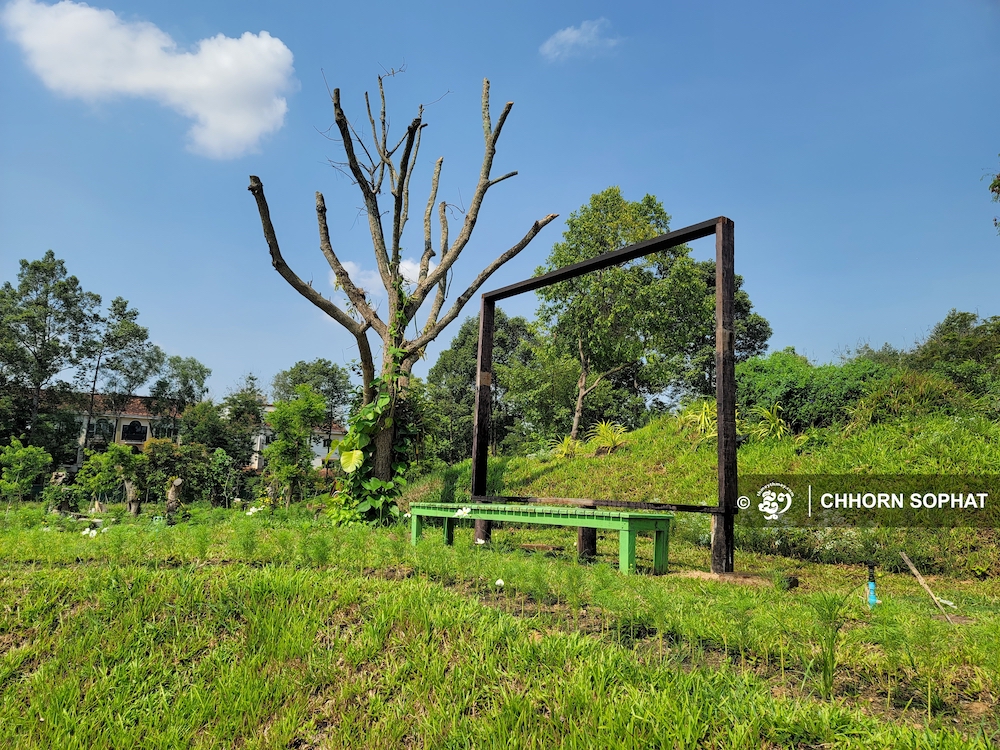
He said that the garden was designed in five sections. The first section is a spice and medicine garden. This gathers rare plants for cooking and traditional medicine that Cambodians believe in to cure diseases.
The second section has a collection of ornamental grasses and sunflowers, veils, cauliflower and many more. These flowers are grown according to the season.
The third section is a palm garden, which is a collection of palm plants, various types of coconuts and various kinds of snails, all set in hills.
The fourth section is the Khmer garden, which combines fruit trees such as mango trees and imported fruit trees such as kao lak.
The fifth section is the Angkor forest and wildlife area. The park is part of the forest in the Angkor area but has been transformed with a walkway with a waterfall. Tourists can walk in the forest and see the wildlife.
“We want the place to be a botanic garden, a collection of exotic and diverse plants from around the world,” said Chandaroat. “We will gather plants as much as possible to exhibit, study and experiment to breed. The garden must be natural, biodiverse and attractive."
He said setting up a garden to a large standard requires a lot of features while planting and caring also require skill, patience and love.
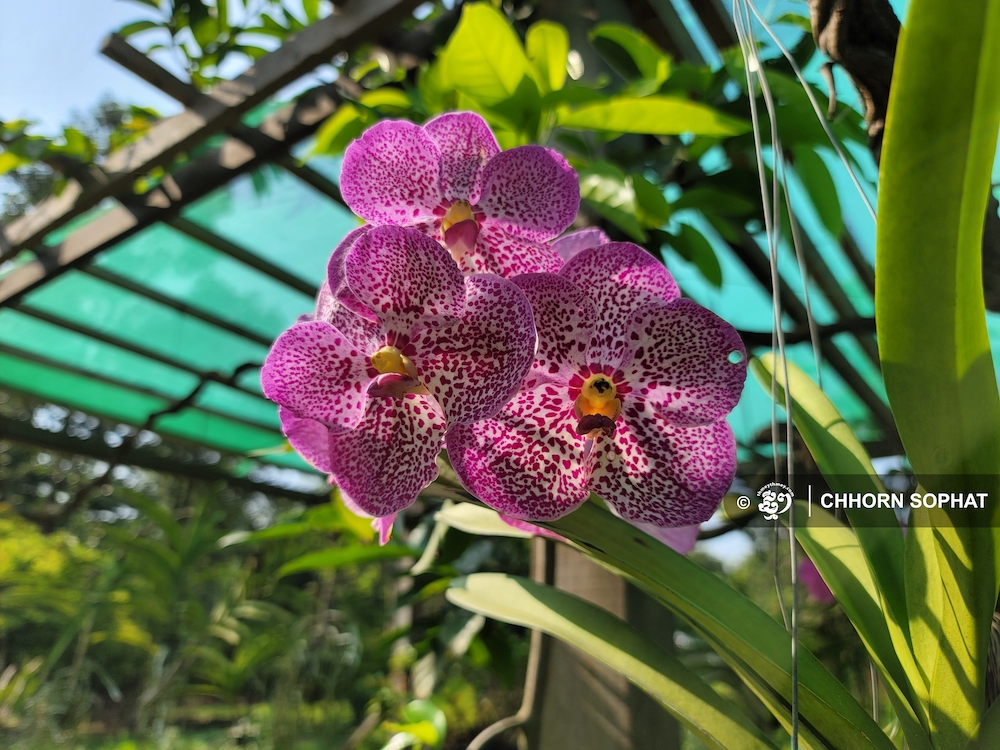
“I am proud to be the leader of APSARA National Authority and thank my colleagues and workers who work with love, patience, and care to grow and take care of all the plants in this park for national and international tourism,” he said.
The launch of the garden has been applauded by the public and experts as a significant step to conserve rare plant species.
Biodiversity researcher Sok Vichea said that originally the botanical garden was a collection of all living plants and was created to show the relationships between plants in different plant groups.
Nowadays, the garden is mainly for the display of ornamental plants, while the exhibition is shown in such a way that the plants have a natural relationship with each other.
“The creation of such a garden is important to preserve and protect the natural resources,” he said. “It can also be the new habitats of some animals for reproduction.”
The main goal of the botanical garden is to preserve the collection of plants by showing names, both common and scientific, and to name the region of origin of those plants, he said.
There are specialized sections in the garden, such as a section for medicinal plants, a fruit section, or a section for rare plant species found throughout the country.
Vichea said Cambodia has only one botanical garden which is the Angkor Botanical Garden, while the other places are used only to stock wild plant species.
“It’s very good because the visitors can learn about the different plant species found in and out of Cambodia,” he said, adding that the garden can be a center for research and for students to write their theses.
It can also be a place for people to learn and understand the natural sources of remedies as he said most Cambodians tend not to know much about the subject.
“Some natural herbs are hardly known by people, so they can come to the garden to learn and see those plants through their eyes,” Vichea said. “And they can also learn more about the general characteristics of the plants.”
Roles of rare plant species
Vichea said that the botanical garden plays a significant role in preserving rare tree species as a lot of agricultural land has been encroached upon, destroying rare species. The illegal timber trade is also one of the causes of the loss of rare trees, which commonly happens in Cambodia.
“If the rare plant species are endangered, it’s regretful because it’s important for scientists and those who are studying them to make discoveries,” he said.
However, he said he has seen an effort to protect and preserve rare plant species in Cambodia, while the effort seems to focus on trees that have been reported to be endangered.
The rare species that habitat deep inside the forest seem to be ignored, and Vichea said he has not seen any effort set out for those species.
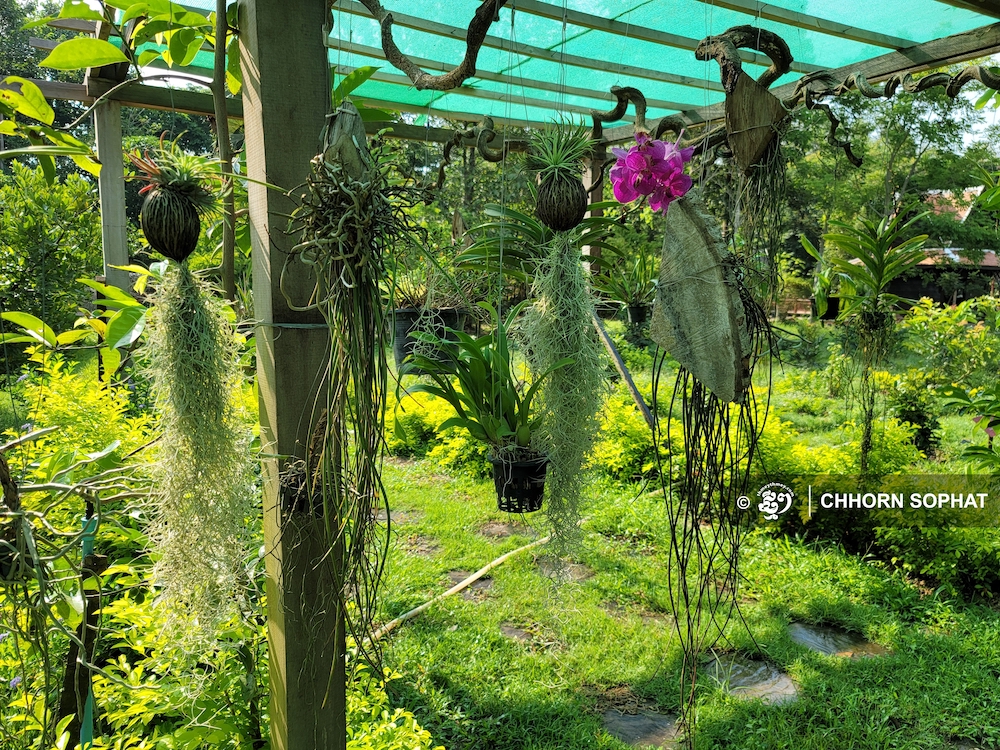
Why rare plants must be protected
“It’s important for the next generation to learn about those rare plants and animals because I believe that in the future there will more consumption of trees and natural resources and the number of trees will be reduced,” Vichea said.
The conservation of rare species is crucial because some species are rare due to human consumption and have ecological relationships with other animals and plants in their natural life cycle, which is a fascinating phenomenon that humans should know about, he said.
He said the creation of a botanical garden in Cambodia shows a positive development toward the biology field in the country as many other countries also have these gardens.
“It’s the best place to learn about the relationship between natural resources, life and humans,” Vichea said.
What is more important is the garden will become the place to store the plant species – a plants bank – for future use. “If they want to do reforestation, they can find the species from the garden. Or some people want to do cultivation, they can find the cultivation plants,” he said.
Vichea encouraged people to support and visit the garden and to contribute to protecting and preserving the forest and natural resources to avert the forest land encroachment as forests are crucial for life.
“It’s important that the next generation knows what the forest is,” he said. “The forest is gone and there are only concrete buildings. I hope it won’t happen in the future.”
Natural resources are crucial for human beings to live as 70-80 percent of nature we depend on, he said.






